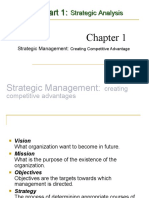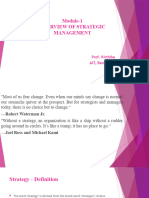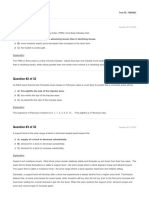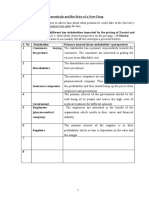0% found this document useful (0 votes)
19 views9 pagesChapter - 1
The document provides an overview of strategic management, defining its meaning, nature, and importance in organizations. It emphasizes the need for strategic intent, including vision, mission, goals, and values, and outlines the roles at corporate, business, and functional levels. Additionally, it discusses the proactive and reactive nature of strategy, along with the advantages and limitations of strategic management.
Uploaded by
manavgupt2004Copyright
© © All Rights Reserved
We take content rights seriously. If you suspect this is your content, claim it here.
Available Formats
Download as PDF, TXT or read online on Scribd
0% found this document useful (0 votes)
19 views9 pagesChapter - 1
The document provides an overview of strategic management, defining its meaning, nature, and importance in organizations. It emphasizes the need for strategic intent, including vision, mission, goals, and values, and outlines the roles at corporate, business, and functional levels. Additionally, it discusses the proactive and reactive nature of strategy, along with the advantages and limitations of strategic management.
Uploaded by
manavgupt2004Copyright
© © All Rights Reserved
We take content rights seriously. If you suspect this is your content, claim it here.
Available Formats
Download as PDF, TXT or read online on Scribd
/ 9





















































































